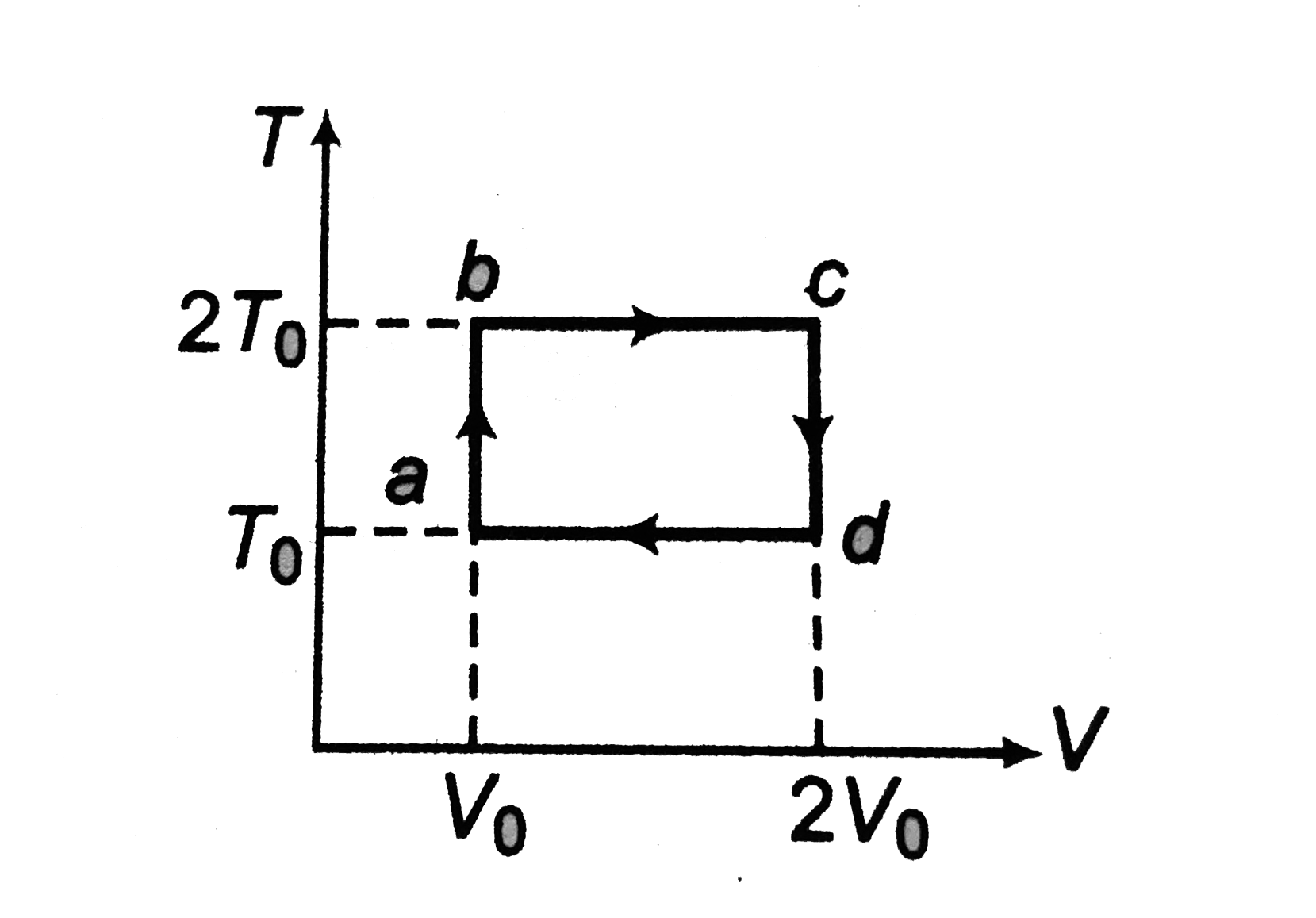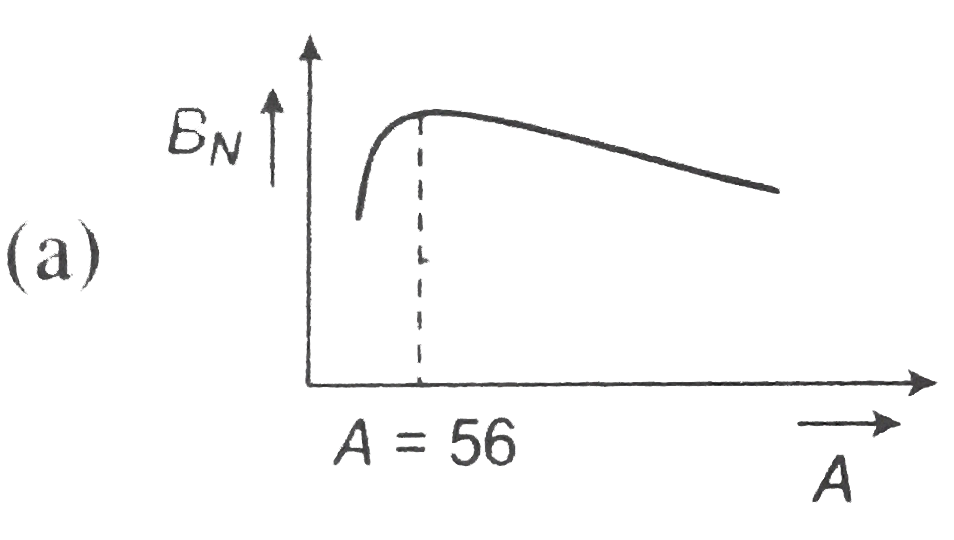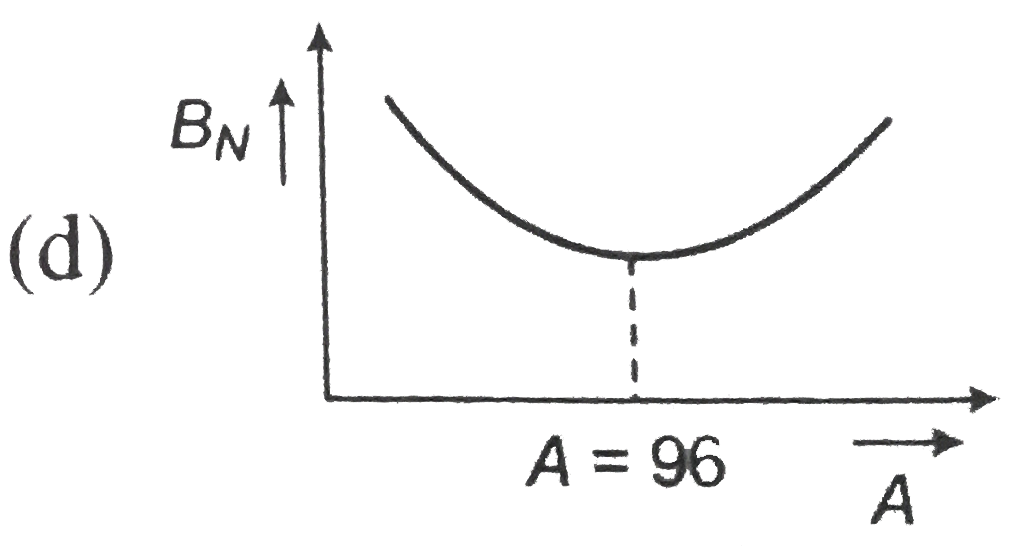Assume that the nuclear binding energy per nucleon (B/A) versus mass number (A) is as shown in the figure. Use

this plot to choose the correct choice(s) given below. Figure
Fusion of two nuclei with mass numbers lying in the range of 1<A<50 will release energy
Fusion of two nuclei with mass numbers lying in the range of 51<A<100 will release energy
Fission of a nucleus lying in the the mass range of 100<A<200 will release energy when broken into two equal fragments
Fission of a nucleus lying in the mass range of 200<A<260 will release energy when broken into two equal fragments
The correct Answer is:B, D
(A) for 1<A<50, on fusion mass number for compound nucleus is less than 100
⇒ Binding energy nucleon remains same
⇒ No energy is released
(B) For 51<A<100 on fusion mass number for compound nucleus is between 100 & 200
⇒ binding energy per nucleon increases
⇒ Energy is released.
(C) For 100<A<200, on fission, the mass number of product nuclei will be between 50 & 100
⇒ Binding energy per nucleon decreases
⇒ No energy is released
(D) For 200<A<260, on fission, the mass number of product nuclei will be between 100 & 130
⇒ Binding energy per nucleon increases
⇒ Energy is released.
Topper's Solved these Questions
- BOOK - ALLENCHAPTER - SIMPLE HARMONIC MOTIONEXERCISE - Comprehension #13videos
SIMPLE HARMONIC MOTION
- BOOK - ALLENCHAPTER - SIMPLE HARMONIC MOTIONEXERCISE - Comprehension #23videos
SIMPLE HARMONIC MOTION
- BOOK - ALLENCHAPTER - SIMPLE HARMONIC MOTIONEXERCISE - Exercise-05(B)46videos
SIMPLE HARMONIC MOTION
- BOOK - ALLENCHAPTER - RACEEXERCISE - Basic Maths (Wave Motion & Dopplers Effect) (Stationary waves & doppler effect, beats)24videos
RACE
- BOOK - ALLENCHAPTER - TEST PAPEREXERCISE - PHYSICS4videos
TEST PAPER
Similar Questions
Assume that the nuclear binding energy per nucleus(B/A) versus mass number (A) is as shown in the figure Use this plot to choose the correct (s) choice given below
 View Solution
View SolutionAssume that the nuclear binding energy per nucleon (B/A) versus mass number (A) is as shown in figure. Use this plot to choose the correct choice(s) given below.
(a) Fusion of two nuclei with mass numbers, lying in the range of 1<A<50 will release energy.
Fusion of two nuclei with mass numbers lying in the range of 51<A<100 will release energy.
(c) Fission of a nucleus lying in the mass range of 100<A<200 will release energy when broken into two equal fragements.
(d) Fission of a nucleus lying in the mass range of 200<A<260 will release energy when broken into two equal fragments.
 View Solution
View SolutionAssume that the nuclear binding energy per nucleon (B/A) versus mass number (A) is drawn and is as shown in the figure. Consider a nucleus of A=110. Fission of the nucleus results into 2 fragments Then which of the following sets could be possibly the mass numbers of the resulting nuclei

A) 55 and 55 B) 70 and 40
C) 100 and 10 D) 90 and 20View SolutionThe graph between the binding energy per nucleon (E) and atomic mass number (A) is as-
View SolutionCircuit as shown in figure below, choose the correct statement
 View Solution
View SolutionFor the resistance network shown in the figure, choose the correct options (s)
 View Solution
View SolutionAs the mass number A increases, the binding energy per nucleon in a nucleus.
View SolutionT-V diagram of two moles of a monoatomic gas is as shown in figure.
For the process abcda choose the correct options given below
 View Solution
View SolutionIn the poteniometer experiement shown in figure, the null point length is l. Choose the correct options given below
 View Solution
View SolutionThe dependence of binding energy per nucleon, BN on the mass number, A is represented by.
(a) , (b)
, (b)  ,
,
( c) , (d)
, (d)  .View Solution
.View Solution
